3.4.1: External Structure of Leaves
- Page ID
- 37050
Learning Objectives
- Identify the main parts of a leaf.
- Compare petiolate and sessile leaves.
- Distinguish among alternate, opposite, and whorled phyllotaxes.
- Compare simple, pinnately compound, and palmately compound leaves.
- Compare parallel, pinnate, and palmate venation in leaves.
- Recognize common leaf margins and shapes.
Each leaf typically has a flat, wide portion called the blade (lamina), which is also the widest part of the leaf (Figure \(\PageIndex{1}\)). Some leaves are attached to the plant stem by a stalklike petiole and are called petiolate leaves (Figure \(\PageIndex{2}\)). Although petioles are narrow and often resemble stems, they are considered part of the leaf. A petiolate leaf thus consists of the blade and the petiole. Petioles usually attach at to the margin (edge) of the blade along the base, but in peltate leaves, the petiole is attached underneath the blade (Figure \(\PageIndex{3}\)). Leaves that do not have a petiole and are directly attached to the plant stem are called sessile (apetiolate) leaves (Figure \(\PageIndex{4}\)). In a special type of sessile leaves called perfoliate leaves, the stem passes through the center of the blade (Figure \(\PageIndex{4}\)). Many leaves have a midrib, which travels the length along the center of the leaf. The midrib contains the main vein (primary vein) of the leaf as well as supportive ground tissue (collenchyma or sclerenchyma).

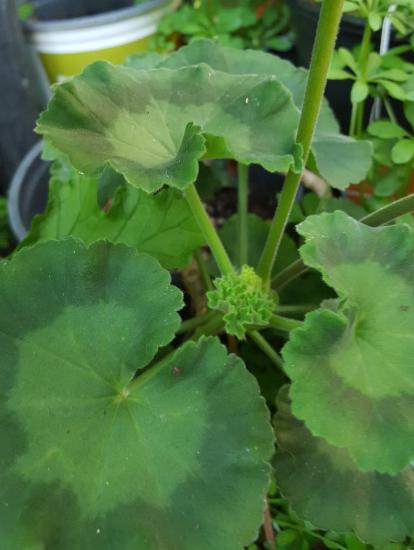
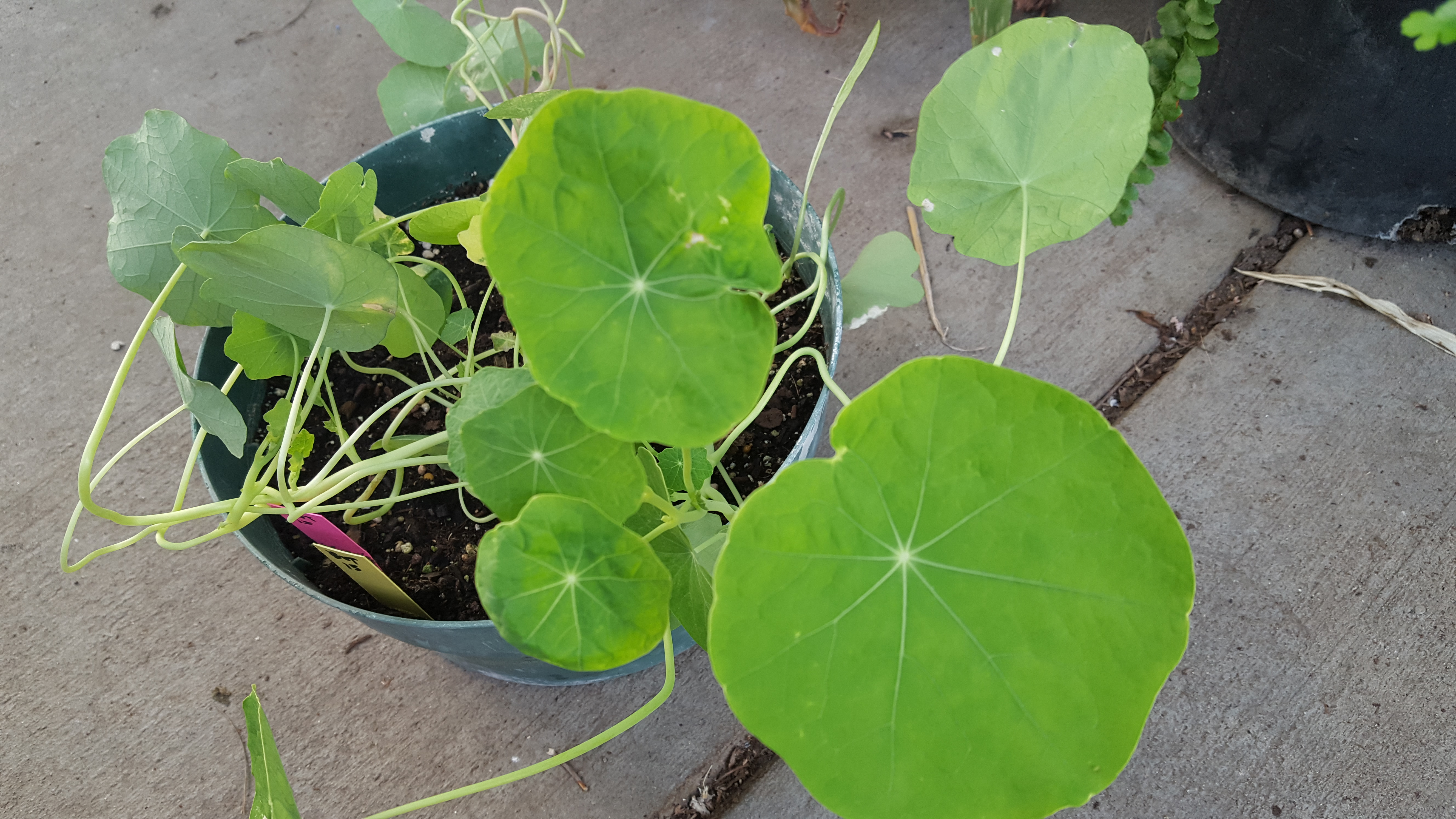
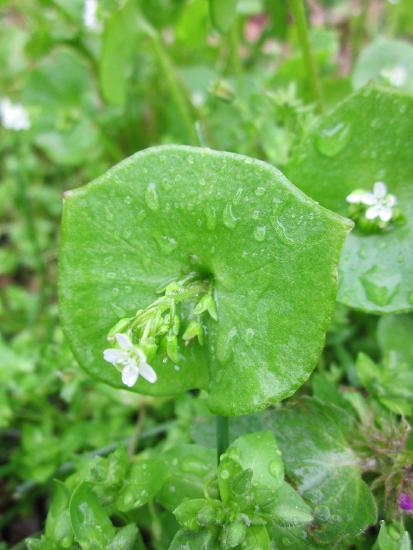
Small, green appendages usually found at the base of the petiole are known as stipules (Figure \(\PageIndex{5}\)). Other structures located near leaf base sheath (typical for grasses, lilies, and related species) and ocrea (typical for buckwheat family, Polygonaceae).
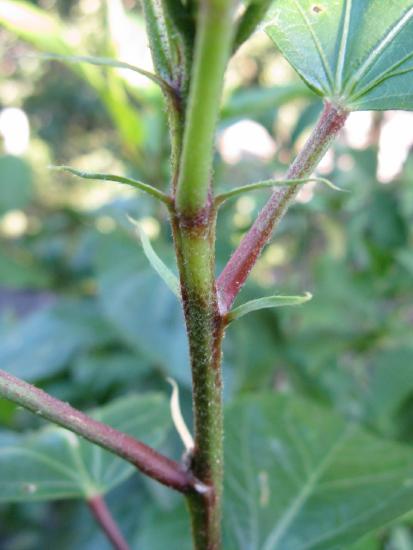

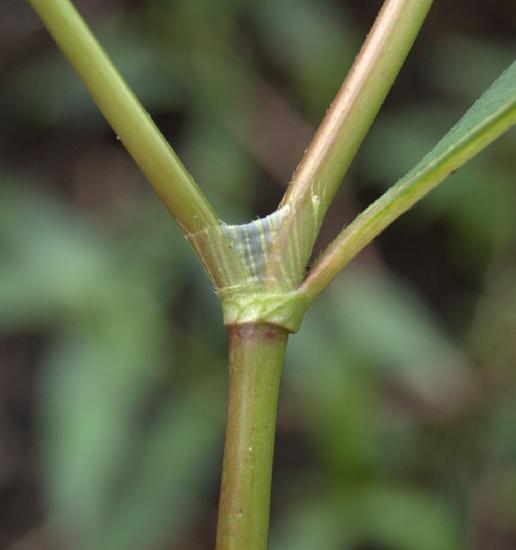
Phyllotaxy
The arrangement of leaves on a stem is known as phyllotaxy. The number and placement of a plant’s leaves will vary depending on the species, with each species exhibiting a characteristic leaf arrangement. Leaves arrangements are classified as either alternate, opposite, or whorled (Figure \(\PageIndex{6}\)). Plants that have only one leaf per node have leaves that are said to be alternate, and alternate leaves often spiral up the stem. In an opposite leaf arrangement, two leaves arise at the node (with the leaves usually connecting opposite each other along the branch). Pairs of opposite leaves may face all in the same direction, or each pair can rotate at 90\(^\circ\) (decussate). If there are three or more leaves connected at a node, the leaf arrangement is classified as whorled, and each whorl can also rotate. Each type of spiral phyllotaxis has its own angle of divergence.
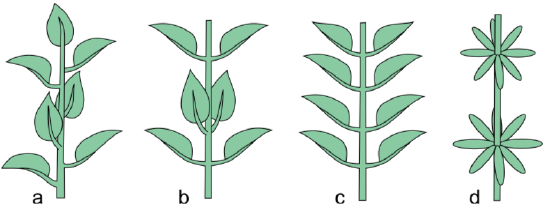
Simple and Compound Leaves
Leaves may be simple or compound (Figure \(\PageIndex{7}\)). In a simple leaf, the blade is either completely undivided (Figures \(\PageIndex{8, 12, 13}\))—or it has lobes, but the separation does not reach the midrib, as in the maple leaf. In a compound leaf, the leaf blade is completely divided, forming leaflets, as in the locust tree. Each leaflet may have its own stalk but is attached to the rachis. A palmately compound leaf resembles the palm of a hand, with leaflets radiating outwards from one point (Figure \(\PageIndex{8}\)). Examples include the leaves of poison ivy, the buckeye tree, or the familiar houseplant Schefflera sp. (common name “umbrella plant”). Pinnately compound leaves take their name from their feather-like appearance; the leaflets are arranged along the midrib, as in rose leaves (Rosa sp.), or the leaves of hickory, pecan, ash, or walnut trees (Figure \(\PageIndex{8}\)). Trifoliate leaves, such as in clover or strawberry, have only three leaflets (Figure \(\PageIndex{9}\))
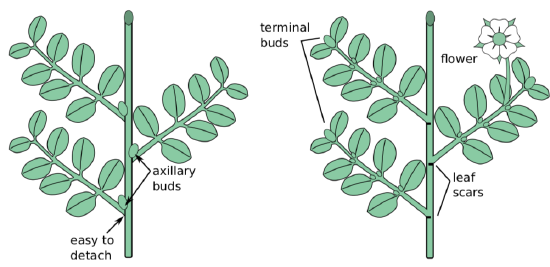
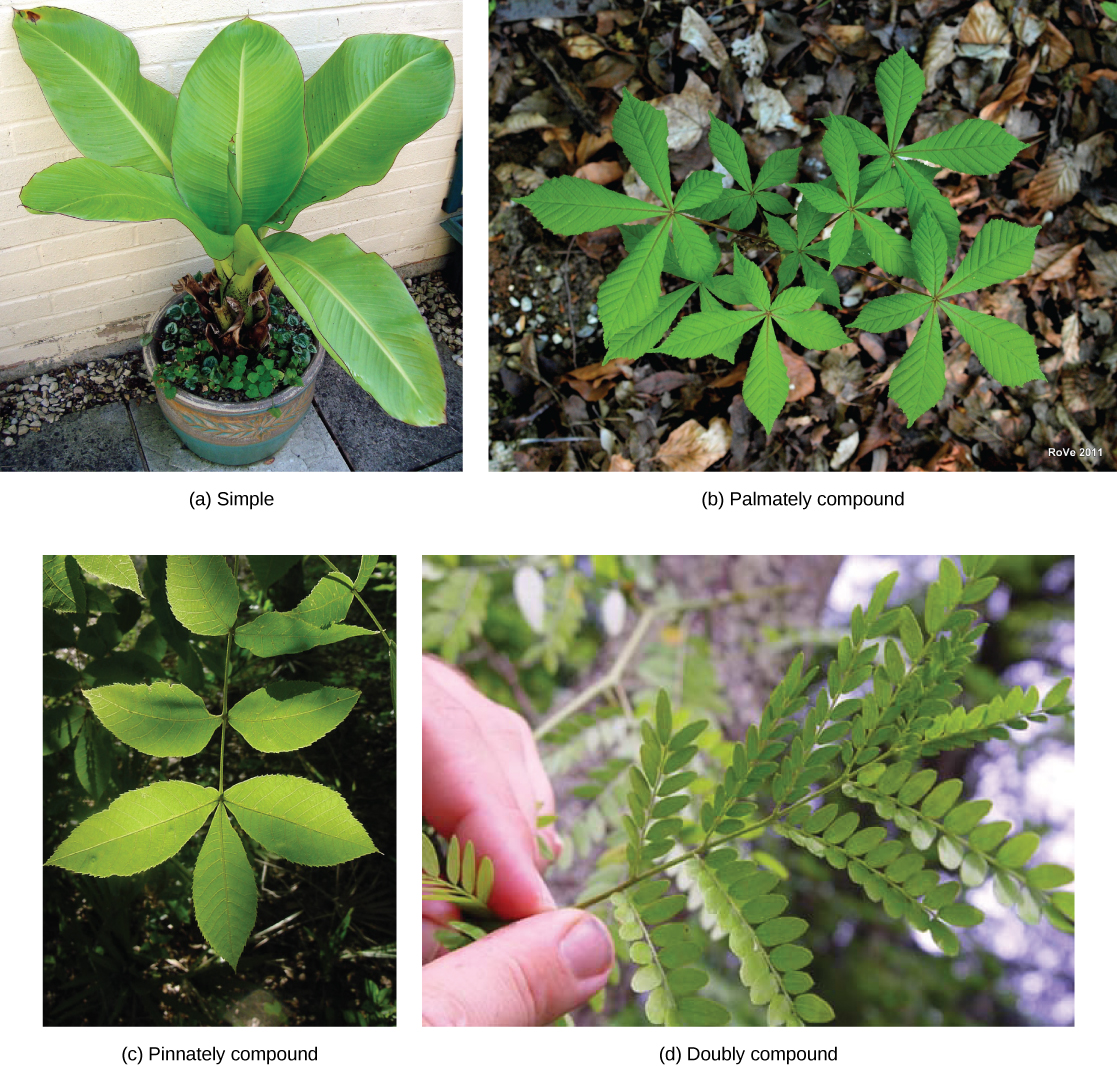
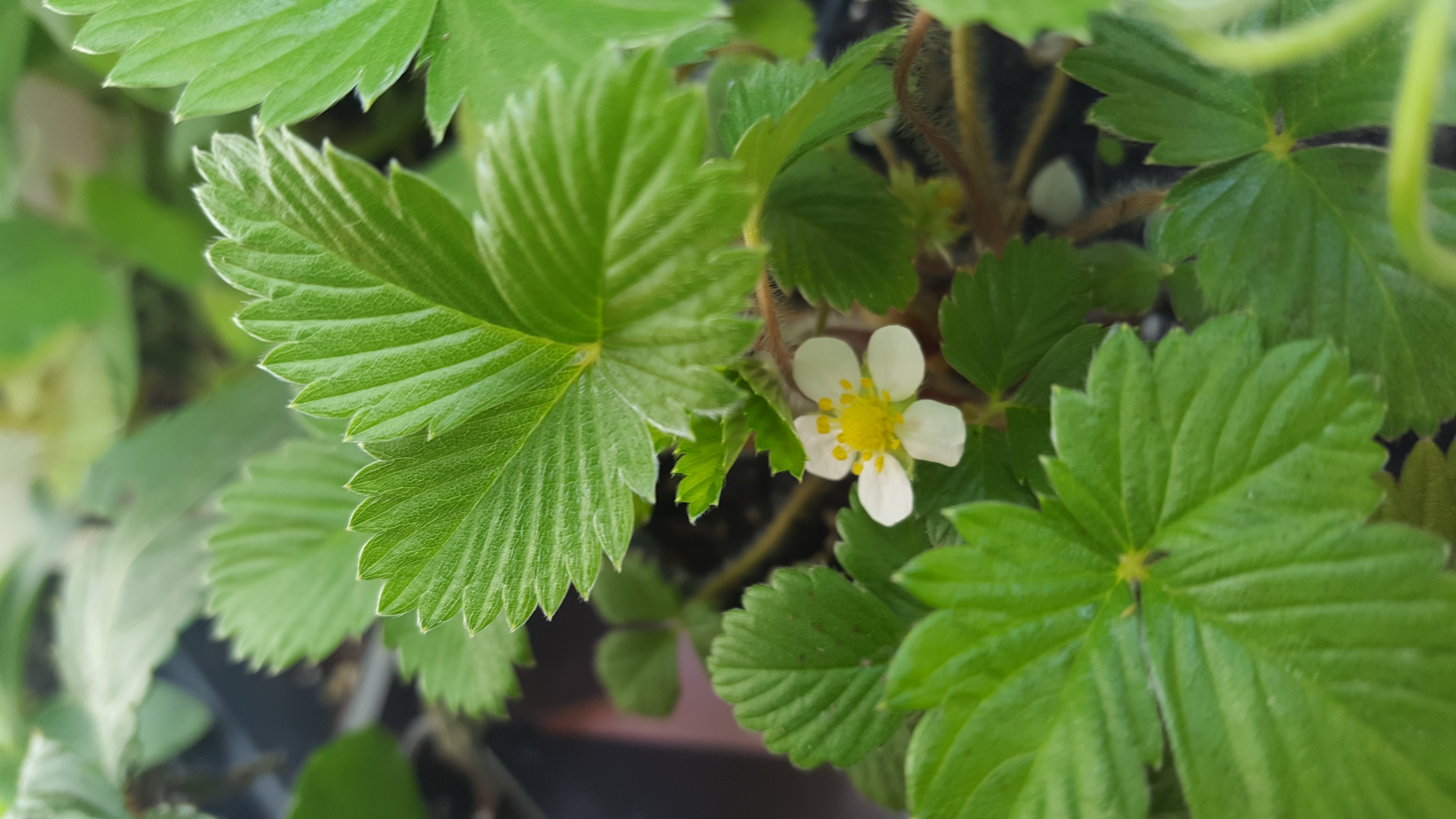
Simple leaves have just one level of hierarchy whereas compound leaves have two or more levels of hierarchy (Figure \(\PageIndex{10}\)). Pinnately compound leaves with two levels of hierarchy are unipinnate. Those with three levels of hierarchy are called bipinnate (twice pinnate; doubly compound), and those with four levels of hierarchy are tripinnate. For compound leaves, a botanist could describe characteristics of the leaf overall as well as the shape, margin, and venation (see below) of the leaflets.
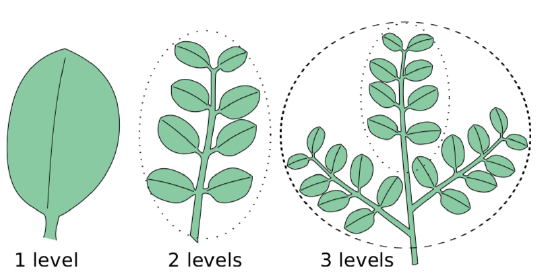
Venation
Leaf veins are vascular bundles coming to the leaf from stem. The arrangement of veins in a leaf is called the venation pattern. Frequently, there is one or more main vein (primary vein) and secondary veins that branch from it. Tertiary veins branch from secondary veins (Figure \(\PageIndex{11}\)).

There are three main arrangements of the most prominent (major) of the leaf. They may all run longitudinally (parallel venation, Figure \(\PageIndex{12}\)), they may branch from a single midvein (pinnate venation, Figure \(\PageIndex{8a, 12}\)), or they may arise from a single point at the base of the leaf (palmate venation; Figure \(\PageIndex{13}\)). Parallel venation is found in monocots, and pinnate and palmate venation is common in eudicots. The maidenhair tree, ginkgo (Ginkgo biloba), has a unique venation pattern in which each vein divides into two similar parts. This is known as dichotomous venation (Figure \(\PageIndex{12}\)).



The less prominent (minor) veins of a leaf may form a branching, netlike pattern, which is called reticulate venation (Figure \(\PageIndex{14}\)). In contrast, the minor veins are arranged neatly, forming a ladderlike structure in percurrent venation.
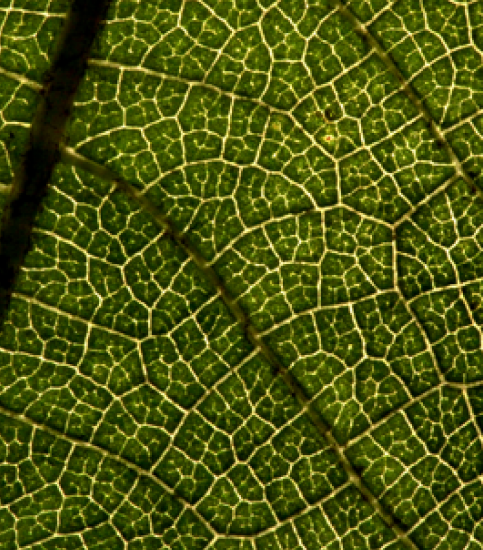
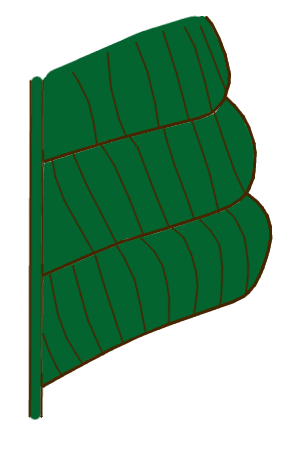
Margins
The margin describes the outline of a simple leaf or leaflet (Figure \(\PageIndex{15}\)). Leaves with smooth margins are called entire. Those with irregularly wavy margins are undulate. Lobate (lobed) leaves may be palmately lobate (with lobes outlining the palmate venation pattern of veins arising from a single point at the base of the leaf) or pinnately lobate (with lobes outlining the pinnate venation pattern of secondary veins branching from a midvein; Figure \(\PageIndex{16}\)). Toothed leaves have small projections (teeth) and indentations that do not align with the venation. For serrate leaves, the sharp teeth point forward, like a serrated knife. For dentate leaves, sharp teeth are symmetrical, like equilateral triangles. For crennate leaves, the teeth are rounded rather than sharp.
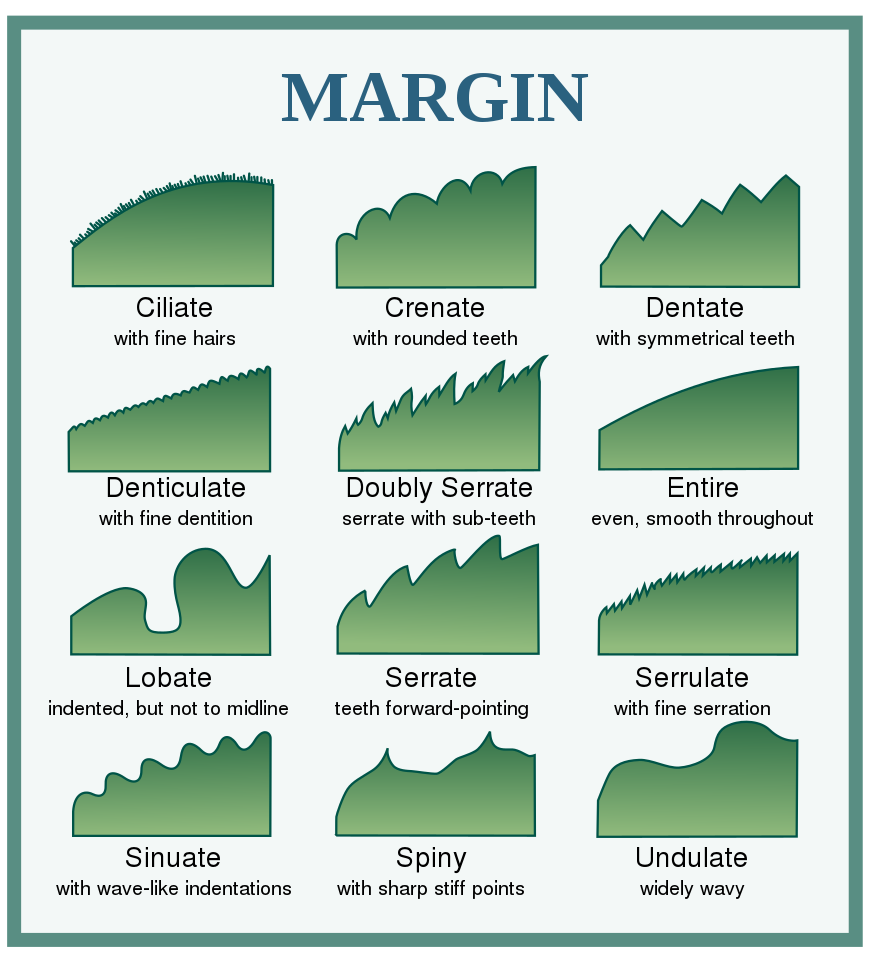

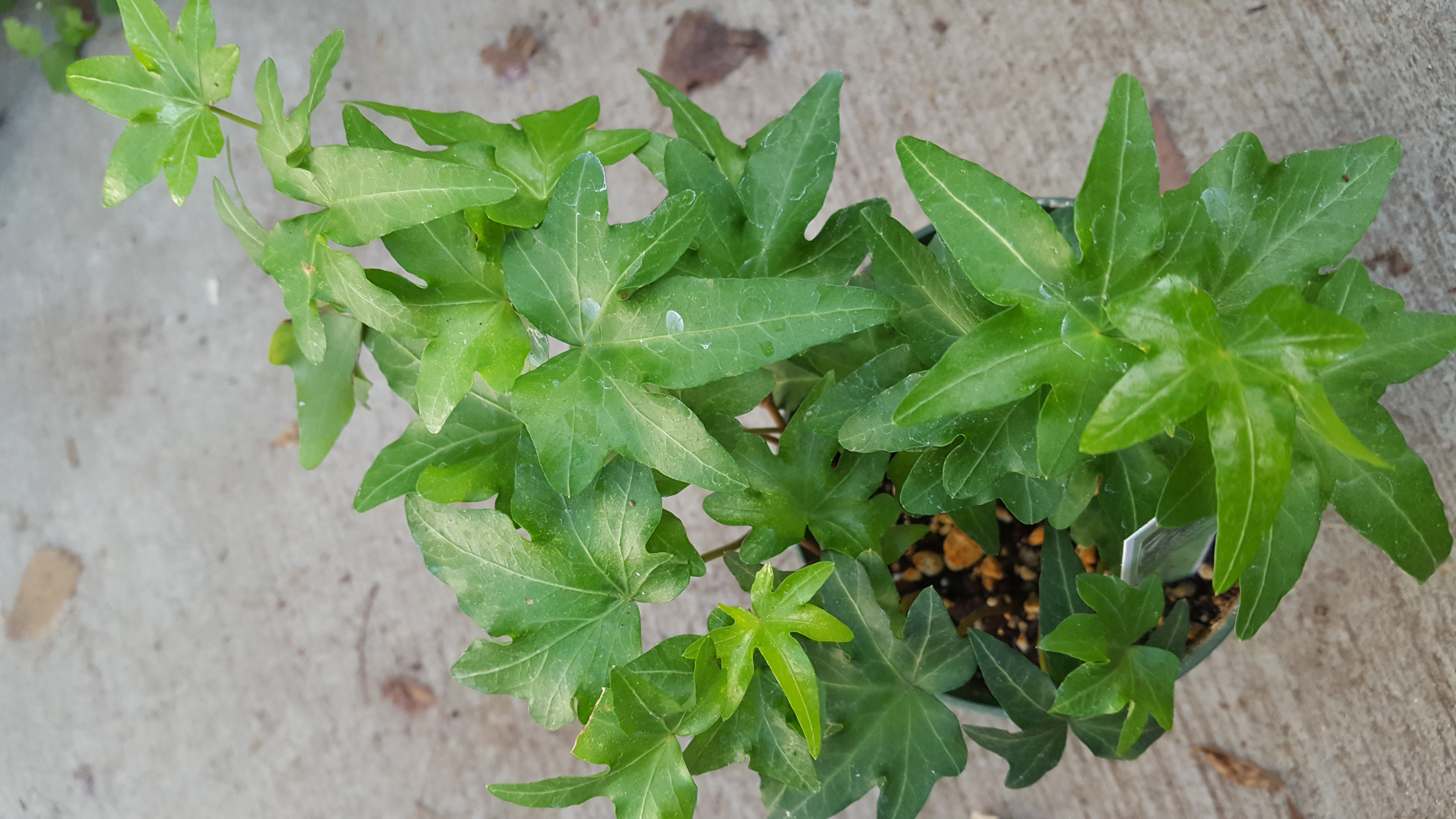
Shape
There are several general leaf shapes (Figure \(\PageIndex{17}\)). The widest part of ovate leaves is near the based whereas the widest portion of obovate leaves is near the apex (tip). If the widest portion of the leaves is equidistant form the apex and base, the leaf may be elliptic or oblong. In elliptic leaves, a single wide middle portion tapers as it approaches the apex or base. Oblong leaves are similarly, but there is a longer section in the middle of these leaves that is uniformly wide. Linear leaves are long and thin. Lanceolate leaves are lance-shaped and somewhat intermediate between ovate and linear.

The leaf shape can be described in further detail using specific terminology that applies to the leaf apex (Figure \(\PageIndex{18}\)) and leaf base (Figure \(\PageIndex{19}\)). The leaf apex could be rounded, acute (forming an angle less than 90º), obtuse (forming an angle greater than 90º), attenuate (tapering to a point), or acuminate (dramatically curving inward to a narrow point). The base of the leaf blade could be rounded, acute, obtuse, truncate (straight), cuneate (wedge-shaped or triangular), or cordate (indented in the center, like an upside-down heart).


Hetrophylly
Heterophylly refers to a plant having more than one kind of leaf. A plant can have both juvenile leaves and adult leaves, water leaves and air leaves, or sun leaves and shade leaves. In California live oak, leaves growing closely to the ground have sharp teeth, presumably to deter herbivores such as deer. Leaves at the top of the plant are too high for herbivores to reach and have entire margins. California sycamore has both palmately lobed leaves and small, perfoliate leaves (Figure \(\PageIndex{20}\)).

Attributions
Curated and authored by Melissa Ha using the following sources:
- 30.4 Leaves from Biology 2e by OpenStax (licensed CC-BY). Access for free at openstax.org.
- 5.3 The Leaf from Introduction to Botany by Alexey Shipunov (public domain).
- 9.2 Introduction to Leaf Anatomy from Botany Lab Manual by Maria Morrow (licensed CC-BY)


